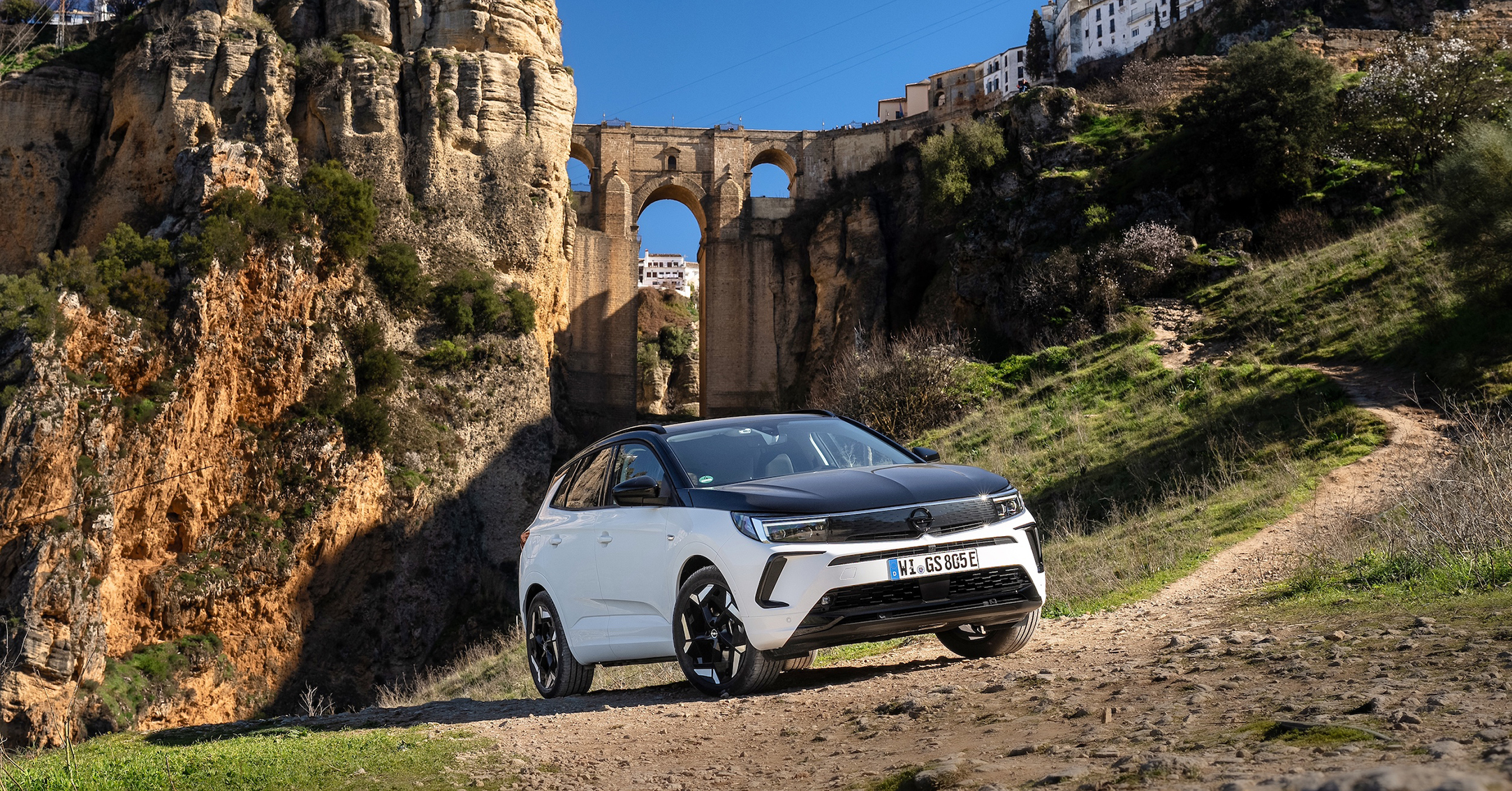Mighty clouds move in slow motion from Spain to Morocco while eleven heavy freighters pass through the Strait of Gibraltar. Exactly where the Atlantic and the Mediterranean meet picturesquely, in the shadow of the famous Monkey Rock. We have arrived at the destination of our road trip – in a wonderful place that helps chase away the blues of grey days. Actually, the Opel Grandland GSe was only meant to conquer the Costa del Sol, a favourite winter domicile in southern Spain. The combination between “sun” and “coast” was coined by hotelier Rodolfo Lussnigg in 1928. You guessed it, for advertising purposes. However, it took a few decades for the plan to take off. In the 1960s, word had spread in Europe that there are more than 320 days of sunshine per year on the Costa del Sol.
A construction boom began, promising thousands of hotel beds and thus prosperity for the region. The downside was that the beautiful Andalusian coast was spoiled by far too many tourist blocks. That’s why we continue in our Grandland GSe, its comfortable sports seats carrying us further south. The abbreviation GSe marks the sportiest version of the Grandland. Does that ring a bell? That’s right, the Commodore A already had it in the early 1970s. This time, GSe stands for “Grand Sport electric”. But instead of an in-line six-cylinder engine, a plug-in hybrid drive provides very dynamic propulsion. The 1.6 turbo is supported by an 81 kW electric motor. A second electric motor on the rear axle delivers 83 kW. All in all: 300 hp and a generous 520 Newton metres of system power.
The plug-in hybrid with all-wheel drive provides very dynamic propulsion.
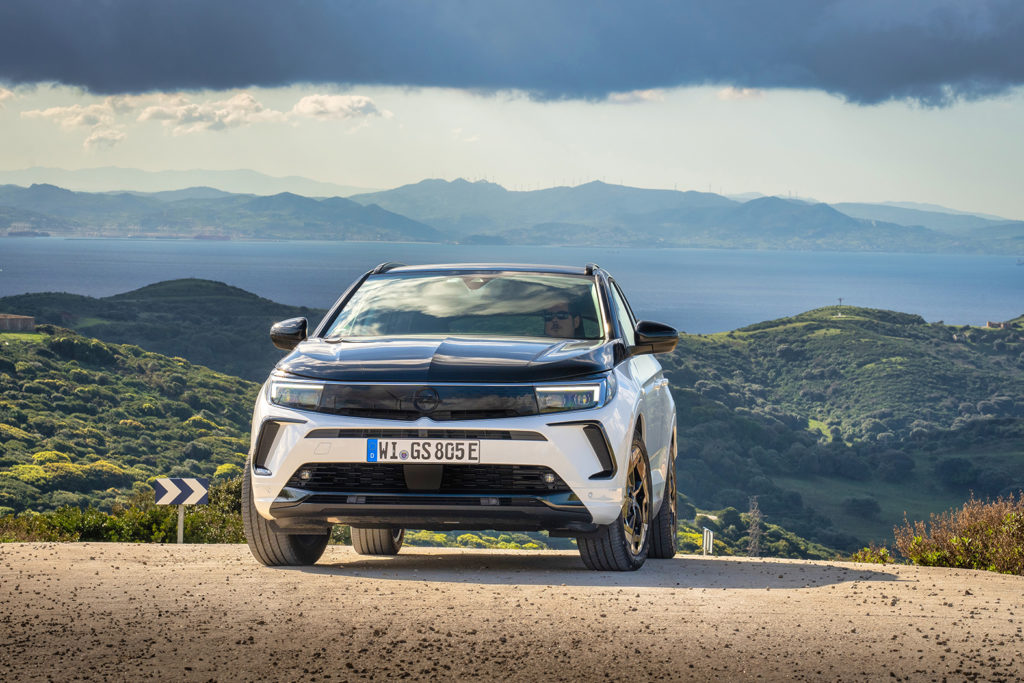
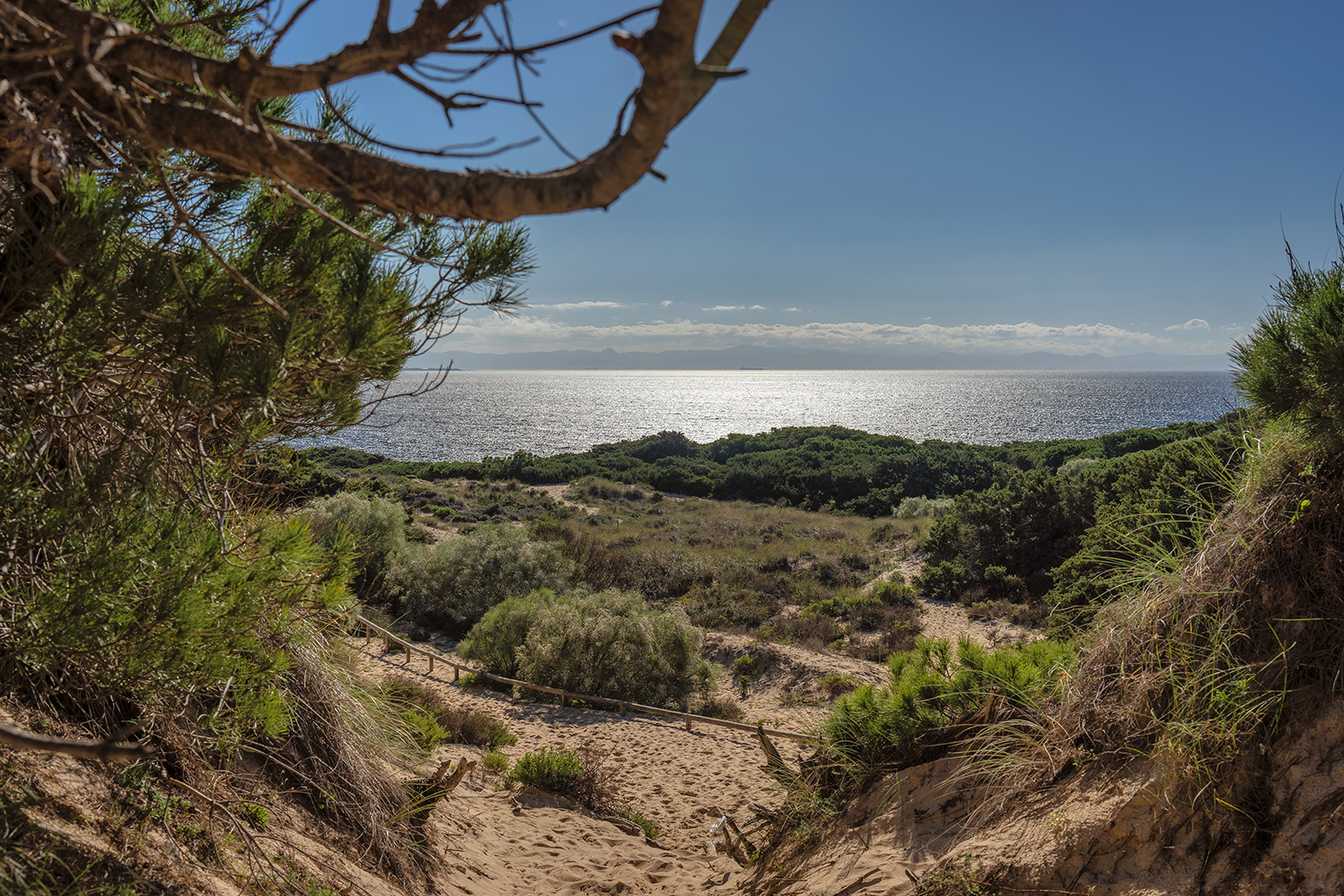
Tarifa is a 40-minute ferry trip from Africa – that is, at the southernmost point of mainland Europe. It is more village than city. Fortunately! This has allowed it to retain a charm that the cities on the Costa del Sol would like to have today. Since the 1980s, Tarifa has been popular with surfers worldwide. Accordingly, the town grows from 11,000 to 80,000 inhabitants in the summer. The best time to visit the region is in the mild seasons of autumn and winter.
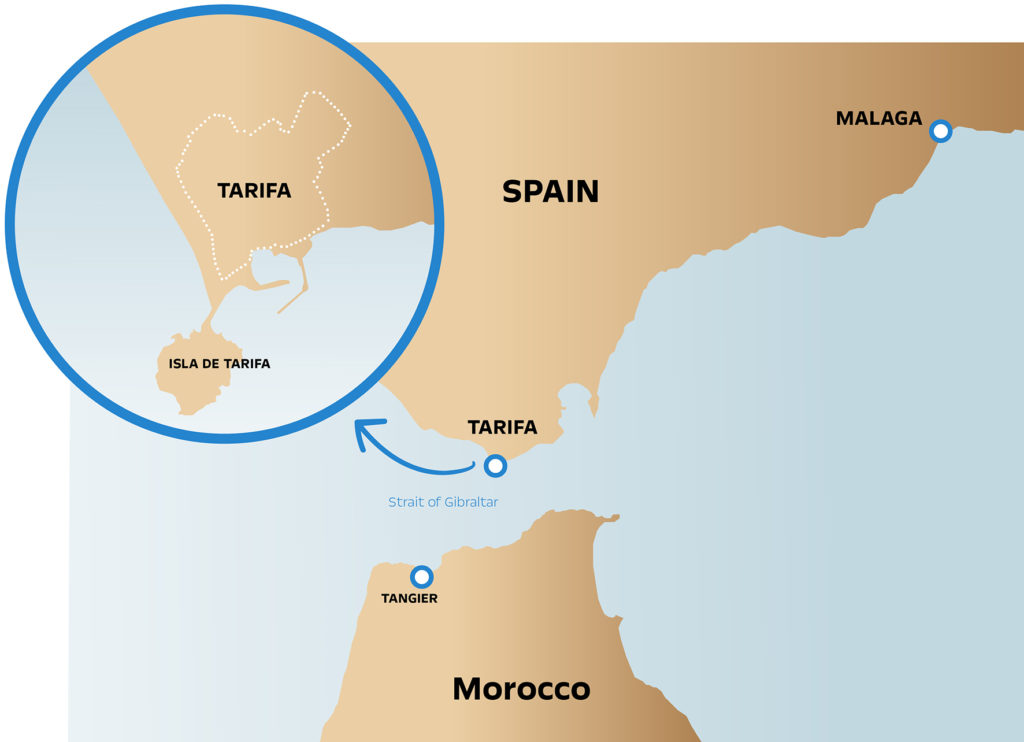
Back to Spain, where the narrowest point between Europe and Africa appears in the windscreen. Just 14 kilometres separate the two continents. The strait can be marvelled from a small vantage point with a cosy café – from up here, the coast of Morocco seems close enough to touch. It is mid-February, and the sun tickles so irresistibly that a thought forces itself upon us: Why did we arrive here so late? Maybe because you just need a little more time for some destinations. After all, there are over 2,500 kilometres to cover. A car journey that is worthwhile – especially if you have the time to absorb the cosy atmosphere of Tarifa. Welcome to the southernmost city in Europe!
Retaining its own charm
The Spaniards like to call Tarifa a pueblo, or village, which is one of the “pueblos blancos”. These white villages are characteristic of the charm of Andalusia. Tarifa’s history, however, is different from the many other white villages in Andalusia, which has to do with its location. From the Phoenicians to the Romans to the Moors – they were all here and left their mark on the little town. Luckily, it never really became big over the centuries. And was thus spared a hotel boom like on the Costa del Sol. Today, you stroll through white alleys that stand out pleasantly from the perfect tourist backdrops elsewhere.
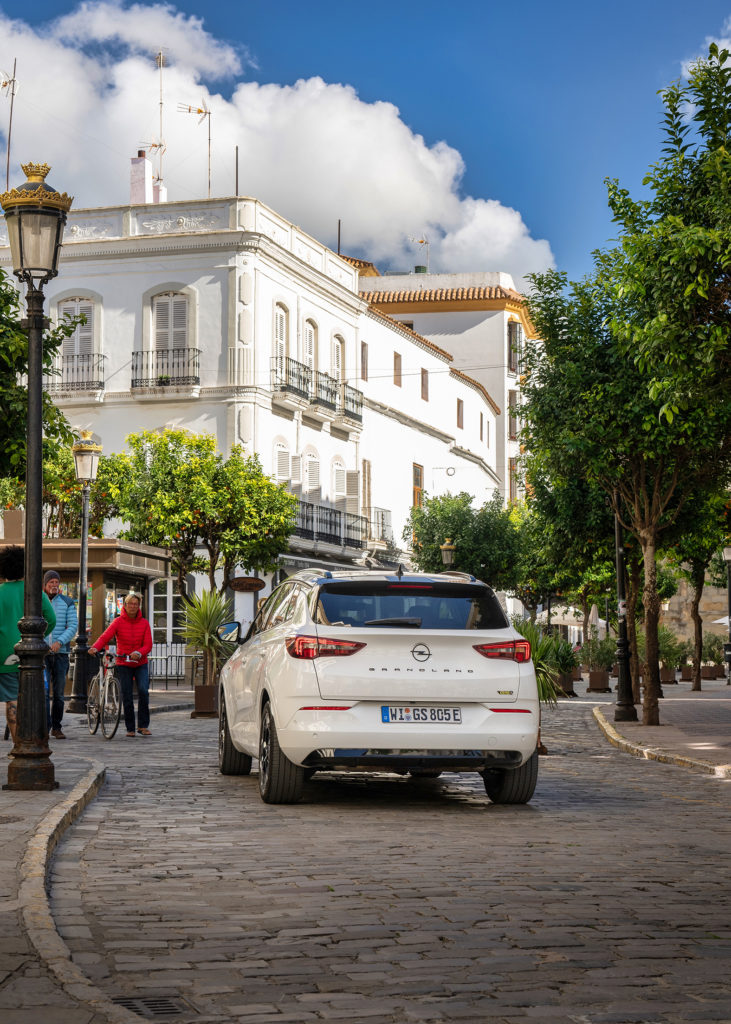
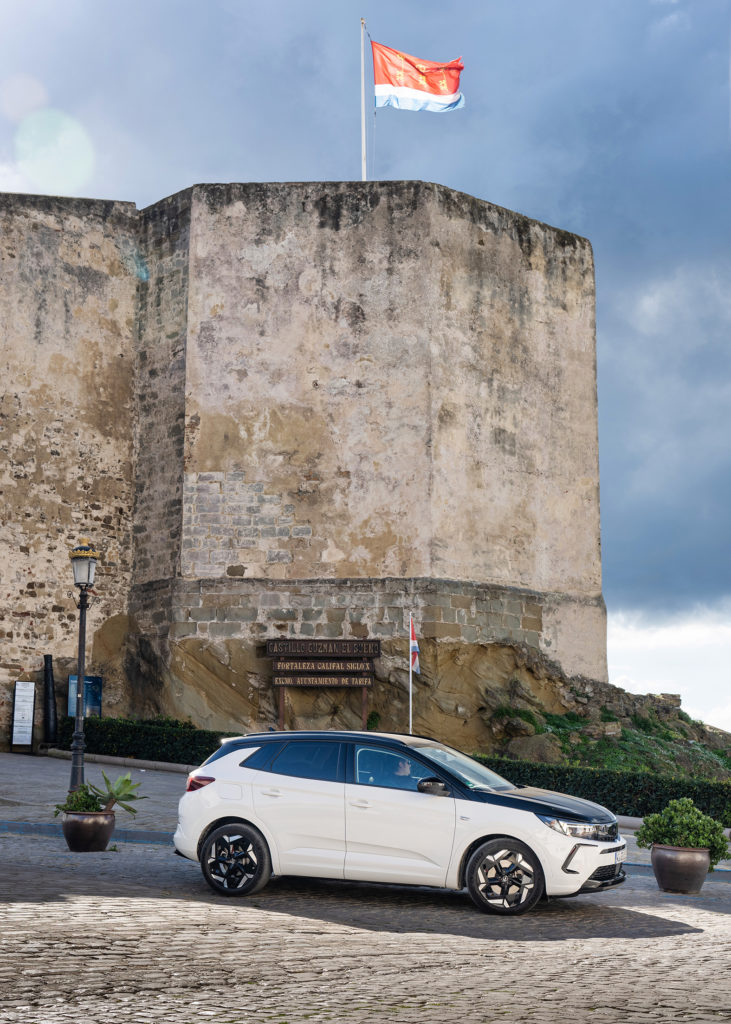
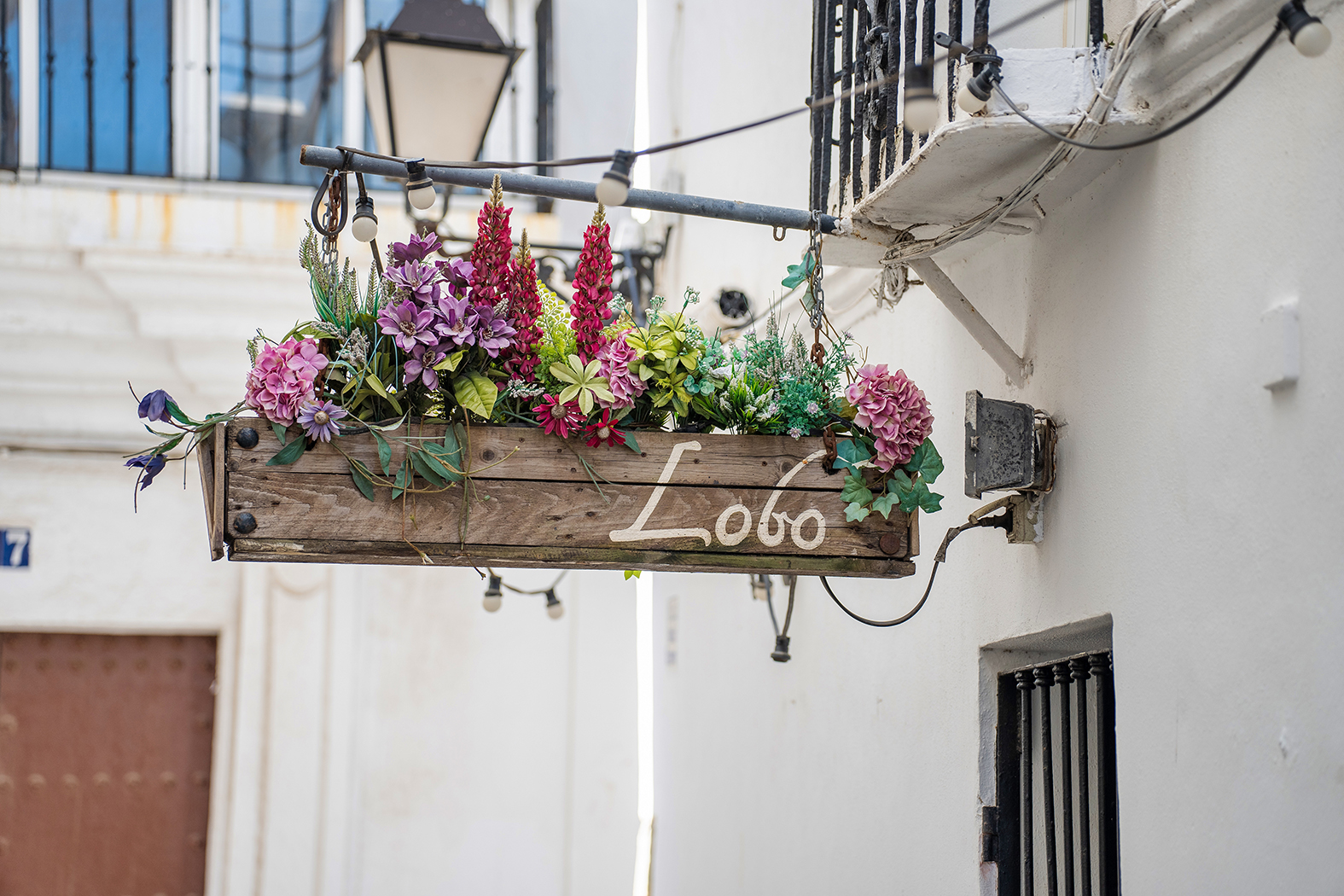
From Phoenicians to Moors – they were all here and left their mark on Tarifa.
In the winter months, around 11,000 people live in Tarifa, in the summer this number can easily increase to over 80,000. This can mainly be attributed to the windy conditions. The Strait of Gibraltar, which looks like a bottleneck, is not only crossed by 300 ships every day, but also by a lot of wind. If it blows from the Mediterranean, i.e. from the east, it is called the Levante. If it blows from the west, they call it Poniente. One of the two is usually present and provides paradisiacal windsurfing conditions. That’s why the beautiful, sandy beaches around Tarifa are among the best addresses for windsurfers and kitesurfers in all of Europe. Positive side effect: With the athletes, an attitude towards life moved to Tarifa that fits wonderfully into the times.
Authenticity and good quality
Instead of hustle and bustle and soulless corporate gastronomy, Tarifa has many small cafés, bars and restaurants that focus on authenticity and good quality. During the day, the white streets are correspondingly cosy. No matter what time of day, someone always has a surfboard under their arm and is on their way to the sea. The others wish them luck and good waves.
By the way, Levante and Poniente also please the locals in summer – because while in Seville or Córdoba you groan in the shade at over 45 degrees on quite a few days, the thermometer in Tarifa rarely shows over 35 degrees. At this time of year, there is at least as much partying as surfing. The more than 200 bars directly on the coast offer the best conditions for this.
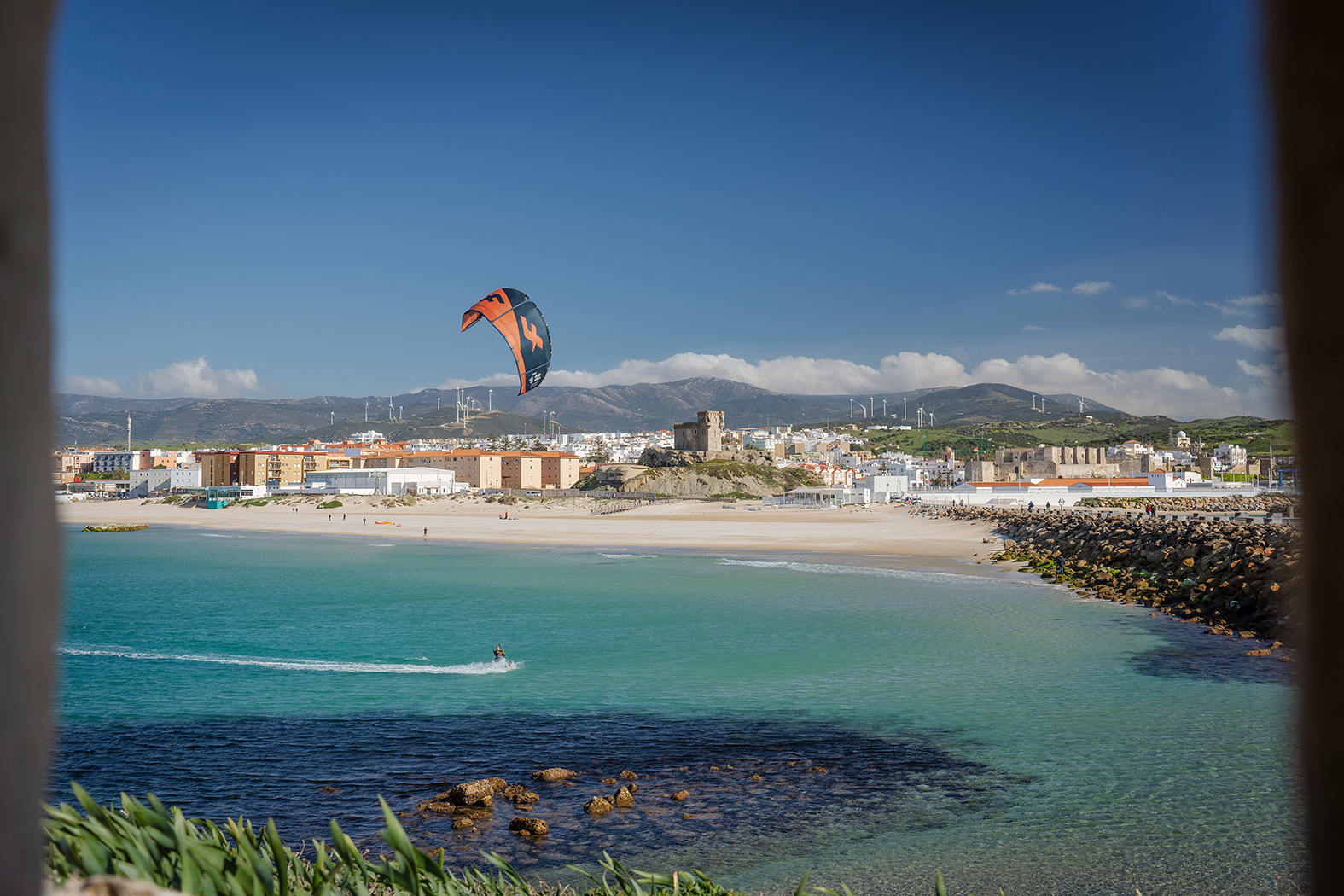
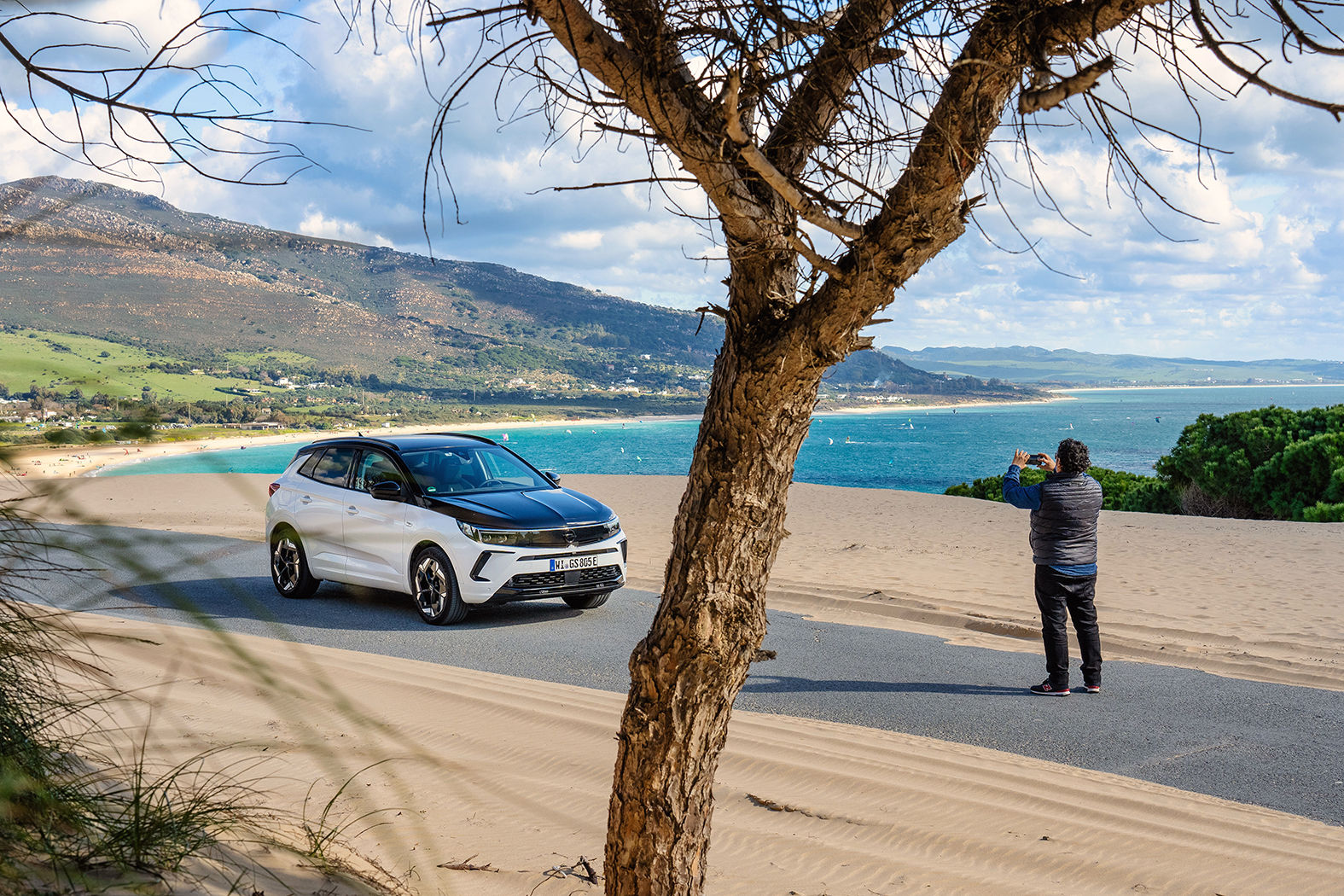
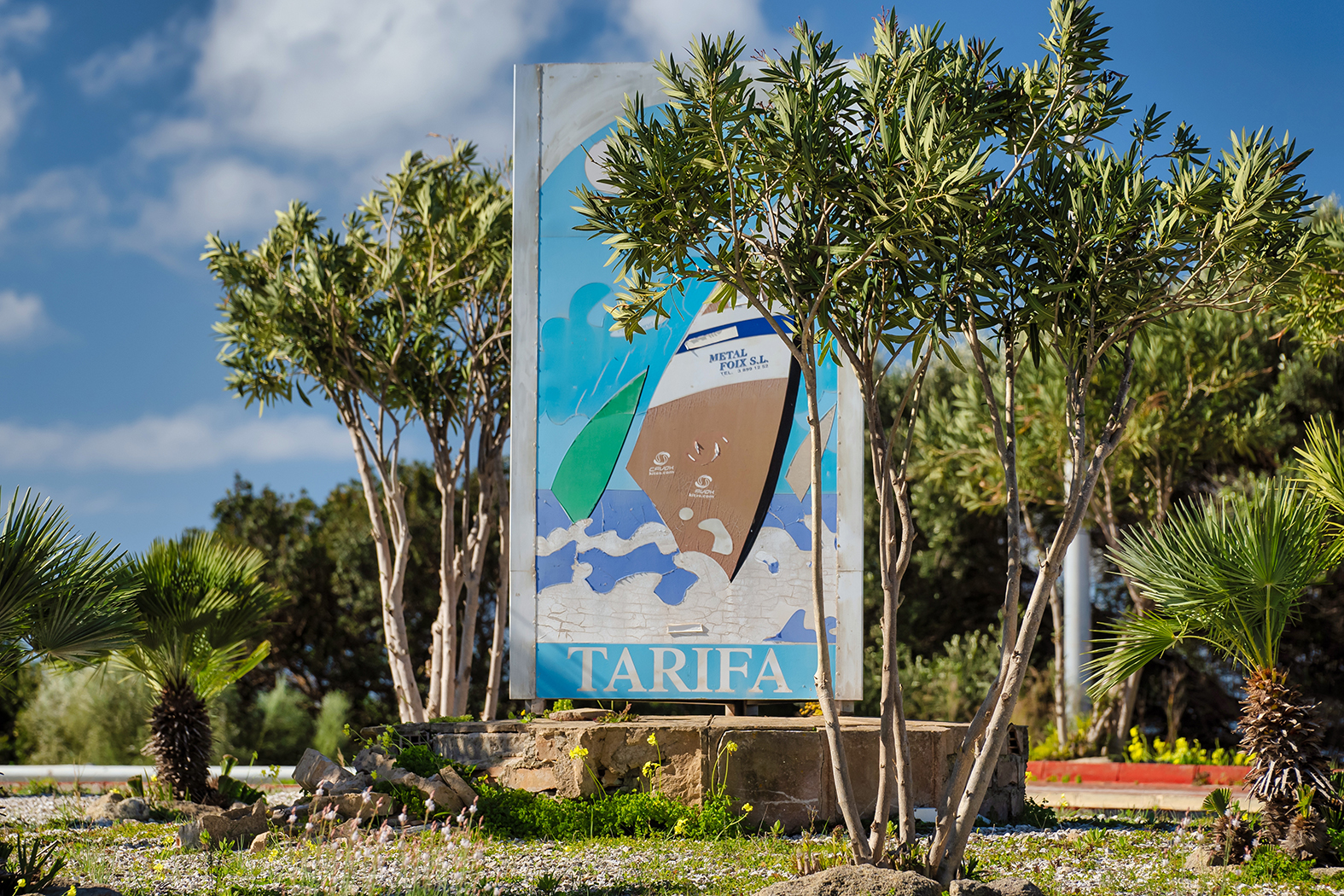
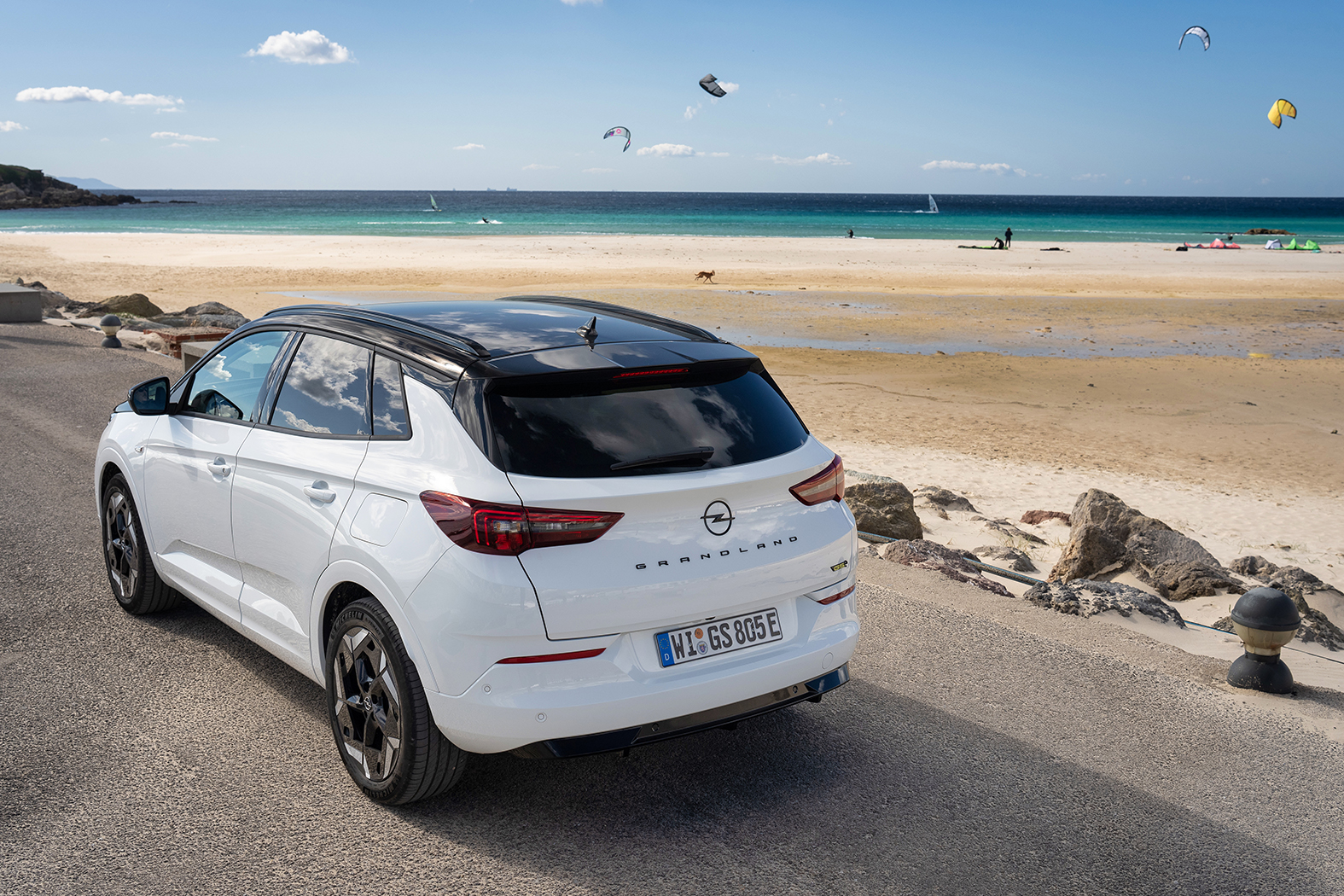
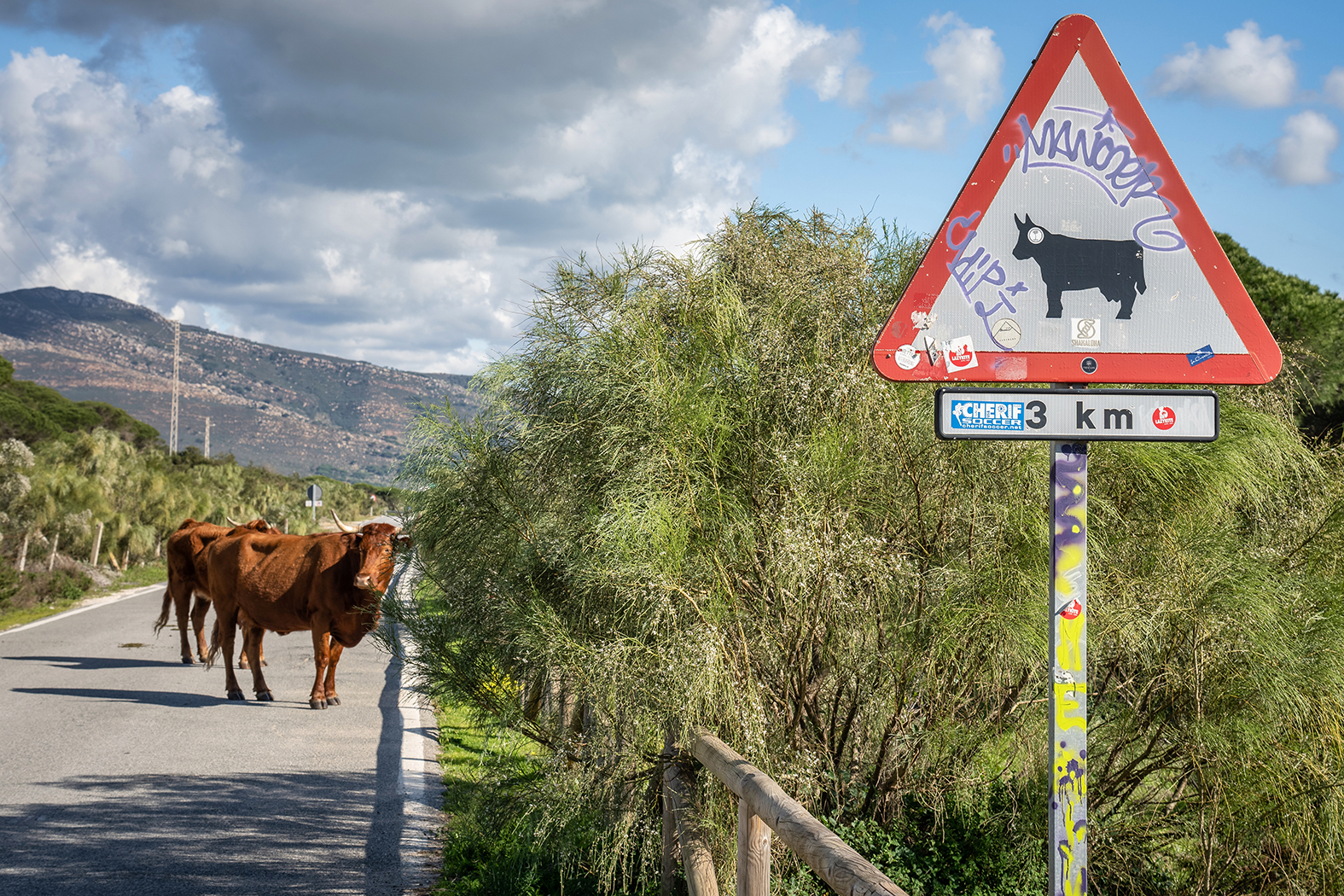
Going out for a delicious meal? No problem. Party? No chance.
In the winter months, on the other hand, Tarifa’s nightlife comes to a standstill. Going out for a delicious meal? No problem. Party? No chance. It’s the ideal time for those who just want to unwind. Warming sun and lots of beach included. If you want to learn something about the sea dwellers, you should stick to Katharina Heyer, who has been offering whale-watching tours in Tarifa since the 1990s. Because the Strait of Gibraltar is home to large populations of whales and dolphins. Heyer’s main credo is not to harass the orcas, pilot whales, sperm whales and fin whales.
And when Levante and Poniente – like today – blow rain clouds into Tarifa? Then we ease into the mountains in the Grandland, enjoy its sporty chassis and the curves. Tarifa in winter? One of the best destinations to chase away the blues of grey days.
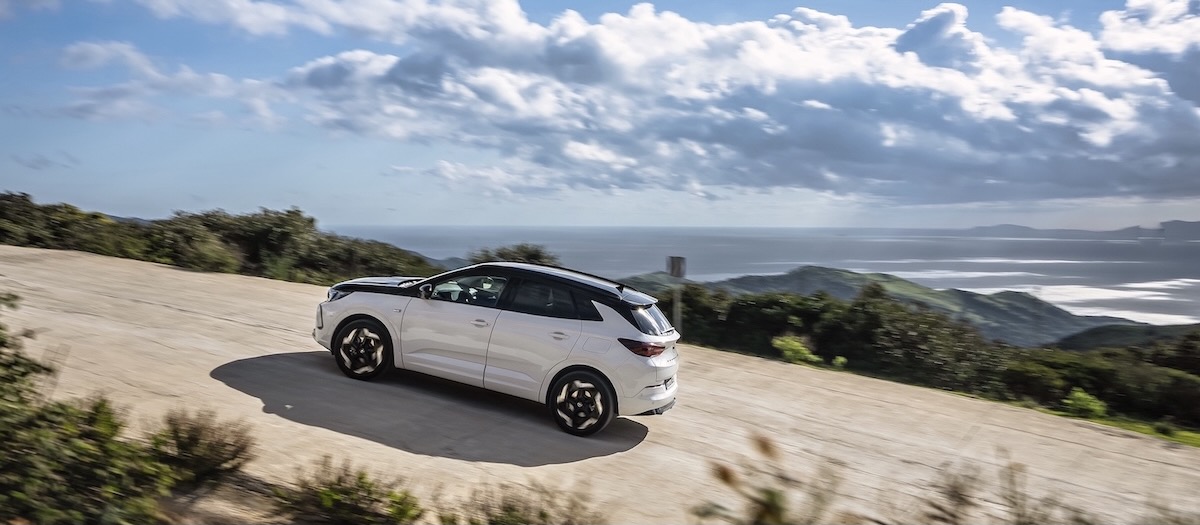
March 2023
